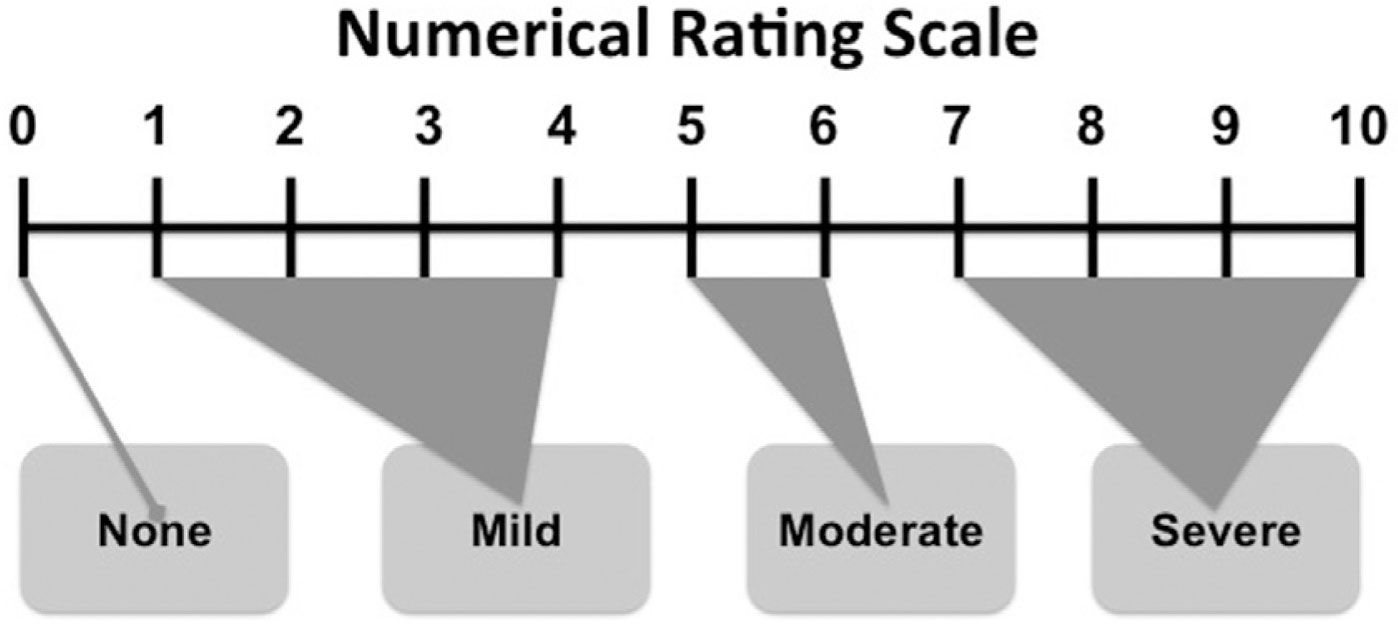Pain Scale… Why are we even talking about it? People will understand and empathize with you if have any visible injury or disability. But, a pain without any visible signs or symptoms can create mistrust. The worst thing about chronic pain is that the person suffering is the only one to know and understand the pain. If you are suffering from a chronic pain you need to communicate about it in the best possible manner to get the required treatment or assistance as required. This is where the understanding of Pain Scales comes in handy.
What is a Pain Scale?
The term pain scale may give you an impression that it is some sort of device that can gauge the intensity of your pain. But, it isn’t. Science, so far, has not been able to develop any medical test that can measure anyone’s pain. It is only the sufferer who knows the intensity of the pain. In simple words, a pain scale is a tool of communication that can be used by a person in pain to communicate about her pain.
Different Types of Pain Scales
Scientists and medical professionals have so far developed a variety of pain scales that can be used by the patients to communicate about their pain. Though simple pain scales are not enough to understand the complexity of various chronic pains, they are really useful for patient in conveying their condition to the medical practitioners.
Here, we are providing a list of the most common types of pain scales used regularly for pain assessment.
Also See: VAS Pain Scale
1. Numerical Rating Pain Scale
This is the most commonly used pain scale. The patient needs to rate the intensity of their pain on a scale of 0 to 10. Zero means no pain while 10 stands for severe pain. This scale is commonly used for persons above the age of 10 years.

Wong-Baker Faces Pain Scale
The rating in Wong-Baker pain scale is similar to the numerical rating but it combines pictures with the number for the rating of the pain. This scale can be used even for children as they can point to the face that depicts their intensity of pain.

FLACC Scale
FLACC stands for Face, Legs, Activity, Cry and Consolability. This scale is generally used by medical professionals to estimate the level of pain in infants or persons who cannot rate their pain themselves. Each of the five areas in FLACC is further assigned three points to make the observation more accurate.

The overall score is understood as follows:
0 – Relaxed and Comfortable
1 to 3 – Mild Discomfort
4 to 6 – Moderate Pain
7 to 10 – Severe Discomfort or Pain
Describing a Pain to Your Doctor
The most complex thing about pain is that it is subjective and so are the pain scales. The same intensity of pain may be rated by a person as 2 on the numerical rating pain scale and 6 by some other person. Furthermore, the treatment cannot be given based solely on the intensity of the pain. There are multiple factors that need to be noticed. So, while you try to rate your pain on a pain scale you also need to communicate other factors very clearly and for that, you need to pay close attention to the symptoms of your pain. The more specifically you describe your pain, the better treatment you can get.
These are some of the factors you need to notice about your chronic pain and describe clearly to your doctor:
- The exact location of your pain in the body.
- Whether the pain remains at the same point or keeps moving to different locations in your body.
- How sudden or gradual a pain comes? How sudden or gradual the pain goes?
- Does the pain remain constant?
- Is there any factor(s) that aggravates or soothes the pain?
- Is your pain seasonal?
- Does your pain have some special characteristics like throbbing, stinging, burning, buzzing etc.?
Pitfalls to avoid while using a Pain Scale
A pain scale is as good as you are in using it. So, you need to understand how to use a pain scale to effectively communicate the intensity of your pain. If you don’t take the pain scale seriously, your doctor would not take your pain seriously.
- Don’t ever say you are experiencing 12 or 15 points of pain on a scale of 0 to 10. Some people tend to do this to show the doctor their severity of pain. But, the doctor in such cases sees that the patient is exaggerating her problems and this will not be a good thing for you.
- Don’t even say that you are experiencing 10 points of pain on the scale if you can smile and talk normally to the doctor. This will again be an exaggeration. For your reference, you can keep in your mind that the pain during normal childbirth is considered to be 8 on the 10 point scale.
You should also remember that most of the chronic pains cannot be treated completely. They can only be relieved.
Use the citation below to add this article to your bibliography
"Pain Scale: Definition, Types, Examples and Usage." Wecapable.com. Web. June 14, 2025. <https://wecapable.com/pain-scale-definition-types-example-score/>
Wecapable.com, "Pain Scale: Definition, Types, Examples and Usage." Accessed June 14, 2025. https://wecapable.com/pain-scale-definition-types-example-score/
"Pain Scale: Definition, Types, Examples and Usage." (n.d.). Wecapable.com. Retrieved June 14, 2025 from https://wecapable.com/pain-scale-definition-types-example-score/

Leave a Reply